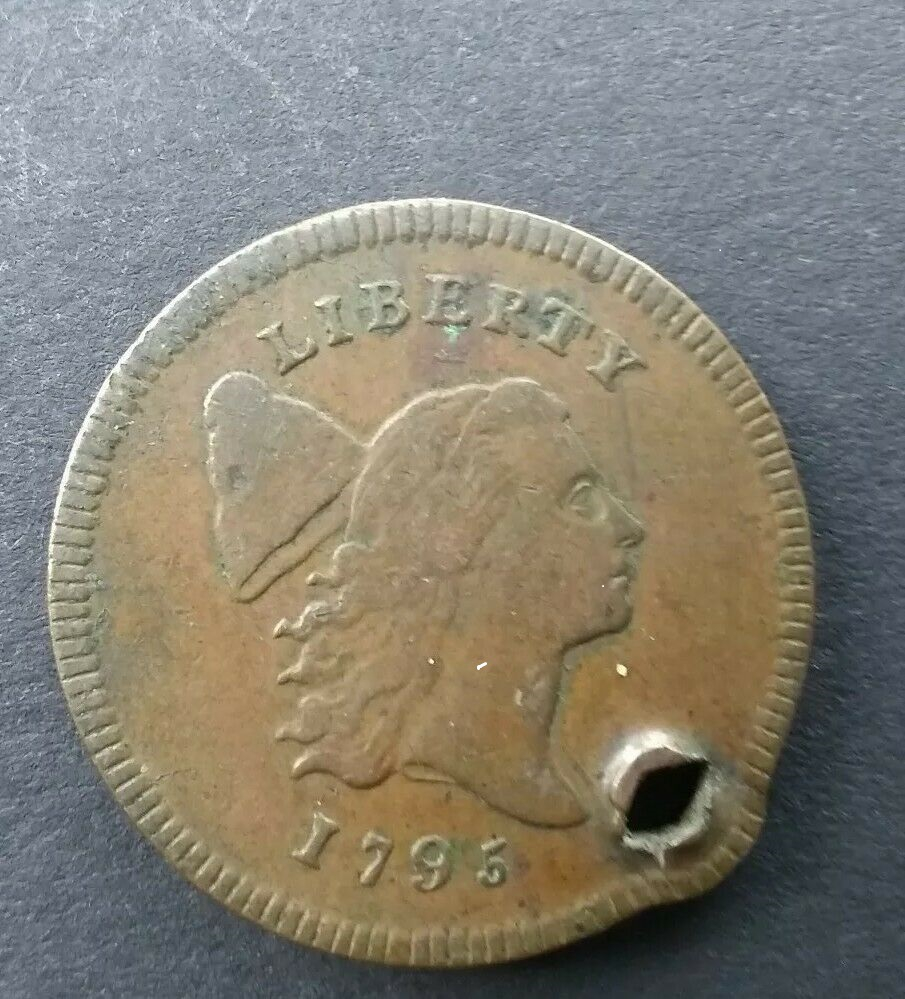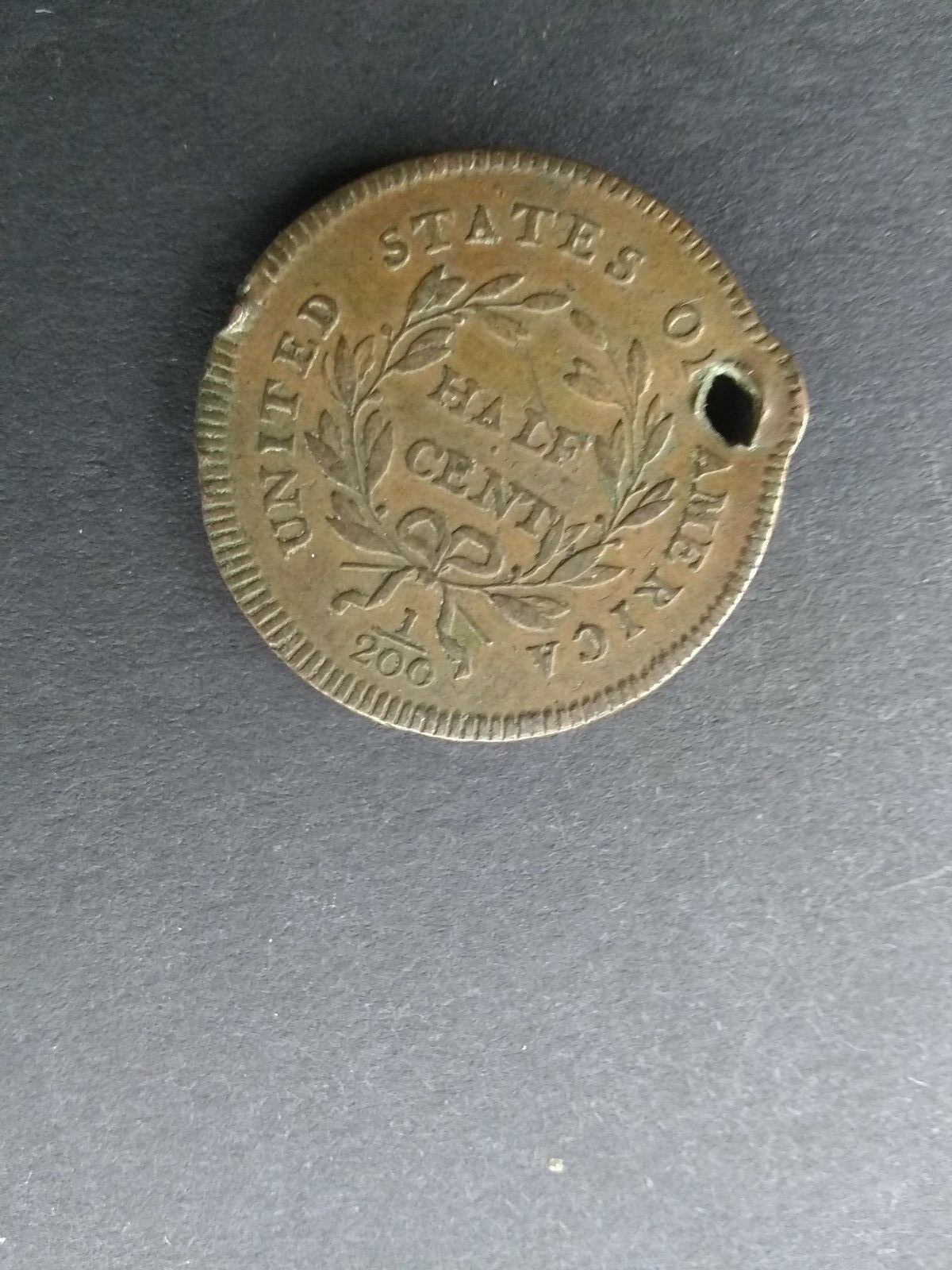Options
1795 Liberty Cap Half Cent Cohen 1a 'HOLED' Rarity 3 - (111.2 grains) [450 estimated survivors]
 coinloverjon
Posts: 96 ✭✭✭
coinloverjon
Posts: 96 ✭✭✭
Another in my 1795 Liberty Cap Half Cent Varieties and sub-Varieties, for a poor man's budget, collection.
A "very fine" example of a Cohen 1a. [thick planchet, lettered edge]
Too bad about the gaping hole in it, but, that damage is is what kept it within my budget, ![]()


Tagged:
10
Comments
Great details!
Nice coin holed from a forged nail. I am looking for a draped bust half dollar with a square nail hole.
I saw 5 holed Draped Bust Halves on ebay tonight
https://www.ebay.com/sch/i.html?_from=R40&_trksid=m570.l1313&_nkw=holed+draped+bust+half+dollar&_sacat=0
OOOps they all had round holes!
I have actually been outbid on a few holed coins, the nice ones always have some competition. I have one 1795 R-6 holed variety half dollar with a drilled round hole.
This 1802 half has a square hole. Looks like he tried with a smaller nail, didn't go through, then hit with the larger square nail. Too expensive @ $1325 https://www.ebay.com/itm/1802-Draped-Bust-Half-Dollar-Rare-Key-Date-only-29-890-minted-Old-Nail-Hole/153635589650?hash=item23c5650e12:g:c34AAOSw9upddCfi
So why did people "hole" them in the first place?
There were multiple reasons for holing a coin. The most common was to be worn as jewelry. Holed coins could also be connected by a cord to prevent loss from holes in pants, as an early dollar was a day's wage. They were hammered on a post or wall for good luck, which is what I want to do with a square-hole DBH and a vintage square nail. Nail shanks were square pre-1800 and rectangular or diamond (like your 1795) 1800-1890 and round after 1890.
This was also a common use for holed coins, from L. A. Pettitt in 1955 via Coin World, “Americans have always been practical people and in the early days when the time came for baby's teething ring, the big dollar with a hole and string came into use. The string looped around the baby's neck became a plaything and a practical teething ring for generations. At present, I have one of these dollars, an 1802 over 1 which came to me from a lady in Trenton who said it had been in her family since the early 1800s until she sold it to me. Two others, which came to me from Alex Kaptik of the Philadelphia Coin Club, are dated 1795 and 1799."
That coin has great detail other than the hole....must have been kept as jewelry/heirloom...Cheers, RickO
Link to interesting Coin World article on holed coins used for teething: https://www.coinworld.com/voices/gerald-tebben/_odd_uses_for_coins0.html
Thanks Nysoto for the great information, Jon
Very nice.